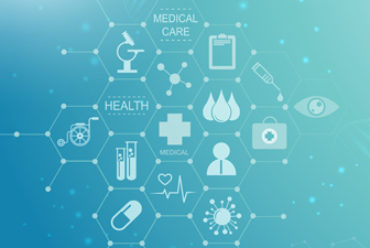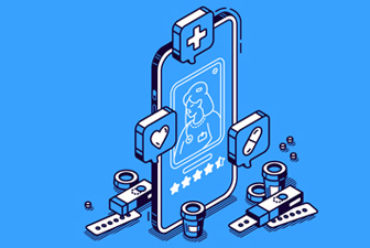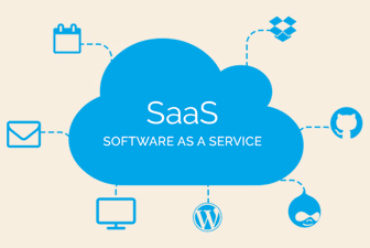Seven Telemedicine Myths Debunked!

Seven Telemedicine Myths Debunked!
By: Urmina Khan
June 09, 2020
Seven Telemedicine Myths Debunked!
Amidst the coronavirus pandemic, telemedicine usage has seen an exponential growth. According to Trustradius – a software review site, interest in telemedicine rose sharply by 616% since the start of the COVID-19 pandemic!
A large number of healthcare providers have begun adopting telehealth services as their first line of defense due to the contagious nature of COVID-19. By virtue of telemedicine, medical professionals can now assess, diagnose, and treat patients using video conferencing, without the need for an in-person visit. Telemedicine has indeed become a medium that helps strengthen the patient-doctor engagement by connecting them in real-time. Through this contactless way of patient checkup, telemedicine enables primary care doctors to refer only those patients who certainly require immediate treatment to emergency rooms, thereby substantially minimizing the risk of exposure to other patients and burden on healthcare providers on the field.
However, despite living in a digital age, over the years, misconceptions and myths have emerged related to telemedicine, online doctors, and new digital technologies for medical care. There is also a significant amount of inertia, when it comes to adopting something different or new. While we cannot do much about the fear of the new and different, we can indeed debunk some of the misconceptions and myths that have come about related to telemedicine. So, let’s go on and bust 7 common telemedicine myths!
Myth #1 – My health records will not be secure when using telemedicine
Reality: Privacy is always a concern when it comes to online activities. However, companies providing telemedicine solutions need to comply with the same rules that hospitals and doctors do, along with all the relevant national and international regulations. Moreover, it is ensured that all telemedicine technology, including video chat systems that are utilized to carry out patient appointments comply with the data protection act. Stern healthcare sector regulations help ensure that a patient’s medical information is fully protected, and it will not be shared with any third party without the patient’s consent. Moreover, Vicenna Telemedicine also has end-to-end encryption, similar to what banking web sites employ, and hence patient data remains 100% confidential and secure.
Myth #2: You require a physical examination to get the correct diagnosis
Reality: Many physicians and patients emphasise on the fact that physical examinations are necessary for quality care. This may be true for some cases, but it cannot be taken as a definite rule. For many trivial but pressing conditions, all that is needed for diagnosis is the patient’s medical history and reported symptoms. Considering how physicians already deliver medical advice through phone calls, telemedicine only expands on that practice. Additionally, telemedicine is extremely convenient for simple follow-up calls or post-operation check ups that generally do not require a physical exam anyway. Often, telemedicine comes in handy for patients who need to quickly check in with a doctor or want to discuss symptoms they are facing so that a doctor can help determine the best course of action, which may or may not involve an in-person visit. All in all, telemedicine indeed helps fill up a huge need within the healthcare system but it does not in any way replace conventional medical treatment..
Myth #3: Telemedicine technology is too mind-boggling
Reality: While it is understandable that using new technology for doctors and patients can be confusing and stressful, in this era of technological dominance, as proven by the ongoing COVID situation, adopting new technologies is an inevitable process and it does not have to be undoable. For example, Vicenna HealthCloud telemedicine has been built with physician and patient input in order to assure optimal user satisfaction, and hence, it is extremely adaptable to the workflow. We are constantly innovating to ensure our platform is user-friendly and flexible to your requirements while also providing 24/7 support from our team in case of any issues.
Myth #4: It will increase risk of medical malpractice
Reality: Telemedicine actually leads to significant reduction of malpractice due to the constant documentation of treatment and prescriptions. An official diagnosis and prescription is provided for a patient’s health problems after a doctor analyzes his or her condition. A study reported in JAMA, the medical journal of the American Medical Association, looked through malpractice claims and discovered that in the 551 malpractice claims they reviewed, none of them involved telemedicine. Whether you’re an orthopedic surgeon with a full schedule of post-op appointments, or a concierge doctor checking in on a patient with a virus, telemedicine gives you multiple points of contact thereby facilitating follow-ups and allowing more frequent check-ins to make sure patients are staying on track and abiding by the treatment. All in all, the constant documentation ensures the highest level of performance from doctors as they could easily be held responsible in case of any carelessness related to patients’ treatment.
Myth #5: Telemedicine is detrimental to the doctor/patient relationship
Reality: As discussed previously, telemedicine is not meant to be a replacement for in-person doctor consultations. The technology is primarily meant to act as a supplement to routine doctor’s visits. Telemedicine is the best option to consider in times when a patient cannot get or go for an appointment with his/her physician due to multiple reasons i.e. living in a remote area, having a busy routine etc, and the problem being faced by the patient is not critical enough for a trip to doctor’s office or the emergency room. All in all, it can be safe to establish that telemedicine is a viable option in certain non-emergency situations when a proper examination and prescription can be received without having to physically visit a doctor.
Myth #6: Telemedicine does not work with Electronic Medical Records (EMR)
Reality: Latest Telemedicine solutions are all effectively integrated with the EMR, with it being an integral part of almost every medical practice. For example, in Vicenna HealthCloud Telemedicine, pre appointment or during the appointment, the doctor can access all clinical information of a patient including previously prescribed medicines, laboratory results with historical values for comparison, diagnostic reports and procedure reports. Constant access to EMR allows the doctor to give a fully informed prescription, keeping in view the patient’s history..
Myth #7: Telemedicine costs too much and wastes time
Reality: The opposite is true – telemedicine actually saves time AND money! Physically going to a doctor’s office actually ends up wasting more resources. First of all, a patient would need to call and get an appointment. If the doctor is not available or booked for the next few days, the patient will have to wait to see the doctor. Once the appointment is set, the patient would need to take out time to go to the doctor’s office and also spend money on transport. In contrast, telemedicine speeds up the process and enables patients to get in contact with a doctor sooner, at a time of their convenience and get faster answers to their healthcare concerns and queries. All it requires on the patient’s end is a smartphone with a camera and an internet connection! A huge benefit to doctors is that they are able to save time from scheduling physical appointments with patients who do not require in-person care thereby being able to spend more time in-office with patients who require hands-on care or specific tests or procedures done.
In this era of digitalisation, telemedicine and virtual appointments are becoming compelling options particularly for millennials seeking medical care or advice. According to Media Post’s survey, 74% of millennials preferred to pick a virtual visit with a doctor via telemedicine over an in-person appointment. So, even if your hospital is reluctant to embrace the new and different, your patients will indeed appreciate your move of launching a telemedicine initiative and keeping up with the global trends.
Telemedicine is secure, economical, efficient, and can enhance patient satisfaction levels. Do not let the myths around technology that is anticipated to serve an important role in the healthcare industry today and in the future deter you!




